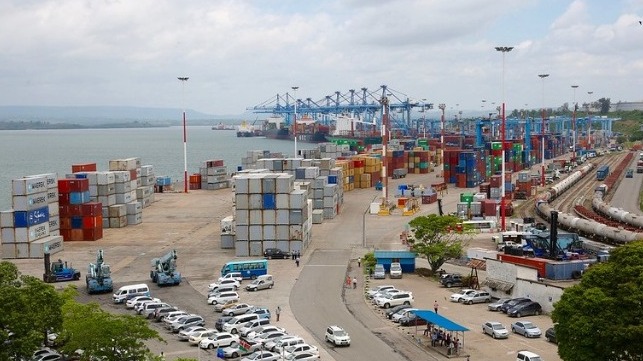Kenya Adopts "Single Window" System for Port Efficiency

Kenya has implemented a single window system as part of efforts to improve efficiency at the port of Mombasa and address the perennial challenge of congestion that has seen importers incur losses due to demurrage charges.
After six months of piloting, Kenya announced that the single maritime window system - which allows shipping agents to electronically submit vessel pre-arrival and pre-departure declarations - has gone live starting June 2.
“Effective Wednesday, June 2, 2021, licensed shipping lines and agents operating in Kenya will be mandated to use the maritime single window system to electronically prepare and submit vessel pre-arrival and pre-departure declarations to the government agencies at the port of Mombasa,” said Kenya Trade Network Agency (KenTrade) in a public notice.
Implementation of the system is in line with the International Maritime Organization convention on facilitation of maritime traffic (known as FAL Convention) that makes it mandatory for governments to introduce electronic information exchange between ships and ports. The FAL Convention came into effect in April 2019 and Kenya is among the 120 member states that have ratified it.
The convention's core objective is the digitalization of the maritime world, thus reducing the administrative burden and increasing the efficiency of maritime trade and transport. The aim is to make cross-border trade simpler and the logistics chain more efficient for the over 10 billion tons of goods that are traded by sea annually across the globe.
The convention recommends the use of the "single window" concept in which agencies and authorities exchange data via a single point of contact. The concept essentially eliminates the manual, decentralized, duplicated and unnecessary lengthy processes that are often blamed for negatively affecting ship turnaround time.
With the system going live in Kenya, at least 12 ship clearance forms have been automated - a move that is expected to significantly improve the turnaround of ships at Mombasa port, which is East Africa’s main gateway.
Increase in trade in recent months has seen the Mombasa port grapple with a recurring challenge of congestion, a problem that risks getting worse with the number of shipping lines calling at the port now on the rise.
A total of 20 shipping lines make calls at the port of Mombasa, which serves an average of about 35 ships every week. Maersk Line controls the largest share of containerized cargo market at the port with about 35 percent of the market, followed by the Mediterranean Shipping Company (MSC) with a 20 percent share.
The Mombasa port has witnessed a steady increase in overall throughput, posting an 11 percent increase in tonnage terms in 2019. With a capacity of 2.6 million twenty-foot equivalent units, the port has been named alongside Lagos in Nigeria, Dar es Salaam in Tanzania and Cape Town in South Africa among facilities in Africa that are almost full due to infrastructure deficit.
